| July 8, 2022
Yamaha channels one of its most famous liveries for the new XSR900, and the changes are more than skin deep.
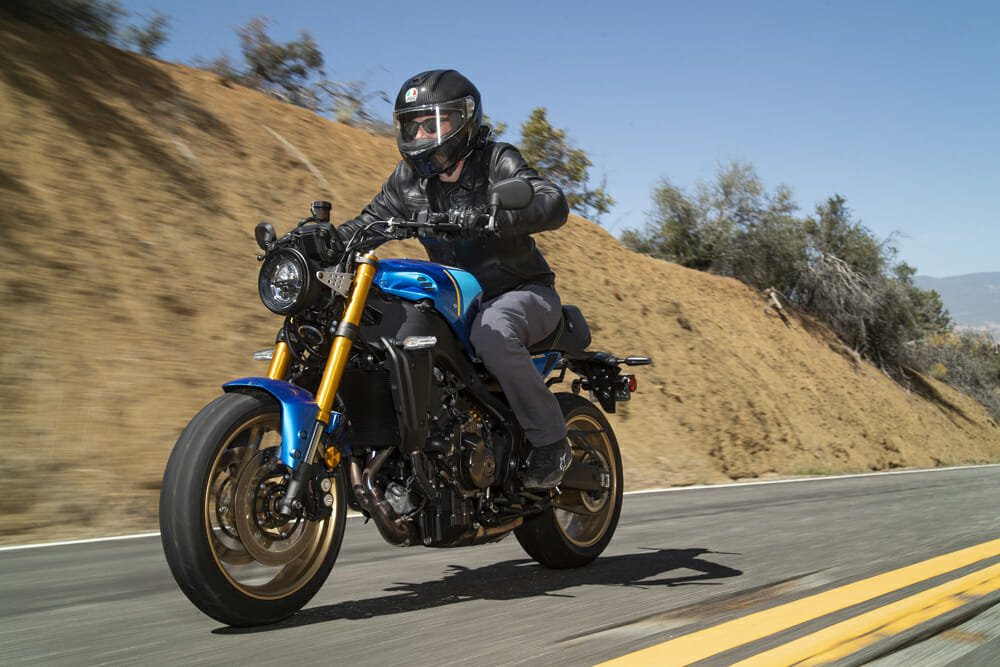 Chris Cantle channeling his inner Christian Sarron up Highway 33. The new XSR900 will do that to a man.
Chris Cantle channeling his inner Christian Sarron up Highway 33. The new XSR900 will do that to a man.
By Chris Cantle | Photography by Adam Campbell
Over the last year, Yamaha has methodically relaunched its excellent 890cc CP3 triple-powered lineup. First, the company tackled its game-changing sport standard, the MT-09, smoothing off some famously rough edges and making the machine an all-around better playmate.
Next, the Tracer 9 GT, already a terrific value-oriented tourer, had the same big helping of refinement thrown its way. But Yamaha saved the best for last in its big update of the XSR900.
Let’s dispense with the big stuff: Measured by part count, the XSR900 is 90 percent new. While the change in styling is conspicuous, marking a shift in inspiration from ’70s machines to the road racers of the 1980s, the mechanical changes are no less subtle. Readers will notice the lightweight die-cast aluminum frame introduced by the MT-09. Sharp eyes might catch clever spin-forged wheels and a new adjustable KYB fork. What you won’t see is the effort at weight reduction inside the engine, or the work done to meet Euro 5 emissions standards.
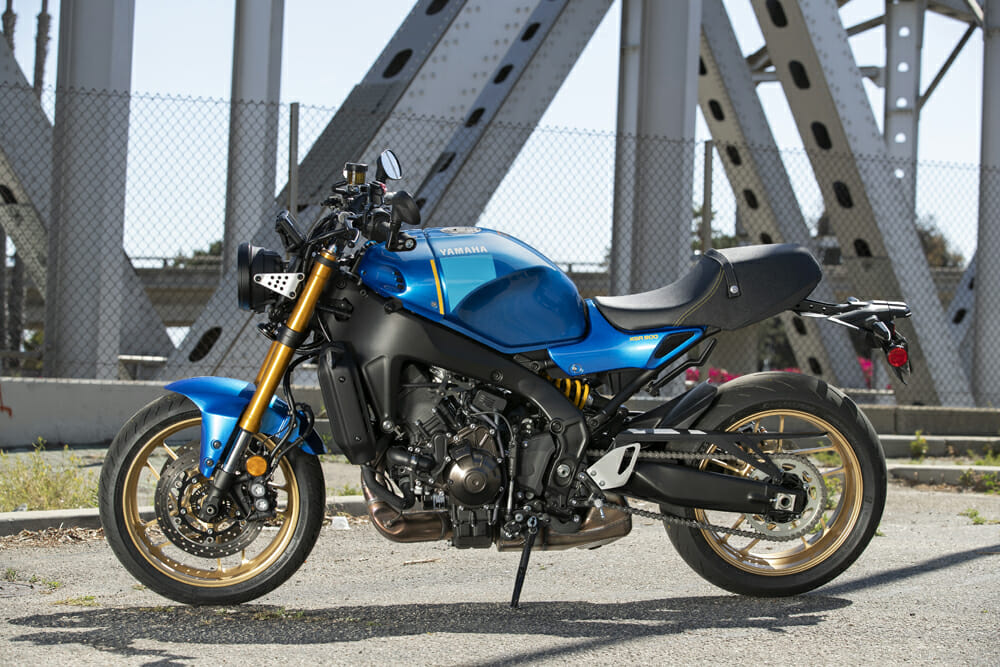 This is certainly a contender for our “Prettiest Bike of 2022 Award.” We should make that award a real thing.
This is certainly a contender for our “Prettiest Bike of 2022 Award.” We should make that award a real thing.
The XSR900 also gets a full suite of electronics that can keep up with the delightfully rowdy powertrain. A six-axis IMU facilitates cornering ABS while standard cruise control helps make the XSR900 a competent commuter. The standard up/down quickshifter rifles off gear changes.
Taken together, this all amounts to a big jump forward for the XSR900. Even on paper. But in practice it’s even better.
On the road, the XSR900 has become the standout of the CP3 family. We know Yamaha’s triple-powered platform well by now. Both the Tracer 9 GT and the MT-09 are terrific. The MT-09—as always—is an unreal bargain. And the most recent update made the riding experience exceptional. But the MT-09 is also visually brash to the point of looking knobbish. Standing still, it looks like it should be wheelieing through a school zone. On the opposite side of the loudmouth MT-09, the brilliantly equipped Tracer is as solid a touring machine value proposition as you’ll find on sale today. But the Tracer has picked up a funny little headlight squint and some of the MT-09’s garish angles. Worse, it’s lost a little of the rip and snort that so defines the wicked-good CP3 engine underneath. After riding them, both left us impressed, but neither left us aching for more.
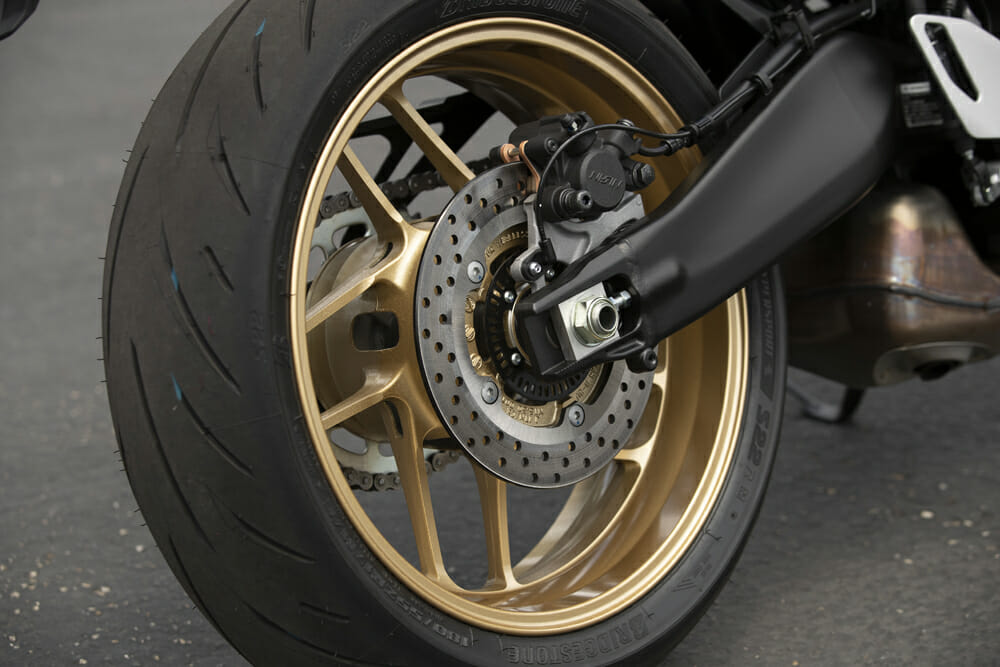 Classic gold wheels are a nice touch and lighter than in 2021.
Classic gold wheels are a nice touch and lighter than in 2021.
The XSR900 has no hang ups. It’s an absolute delight, inhabiting a sweet spot between the maturity of the Tracer and the idiot glee of the MT-09.
Yamaha leaned into the racy aesthetic with a more aggressive riding position, shifting the bars forward and down. It has shouty intake vents located on either side of the fuel tank. And the seat pad is impressively hard. Even buttocks accustomed to the abuses of long days in the saddle will be surprised by the XSR’s aggressively firm foam. Another detail plucked from racers of old.
That’s all before you light off the 890cc triple. The CP3 ignites with a snap and a big intake grumble. Like its stablemates, the 2022 XSR benefits from a 3mm-longer stroke (now 62.1mm) while using the same 78mm bore. This results in a displacement bump from 849cc to 890cc. The character is just the same. It’s an instant reminder of what made the original Yamaha crossplane mill so compelling.
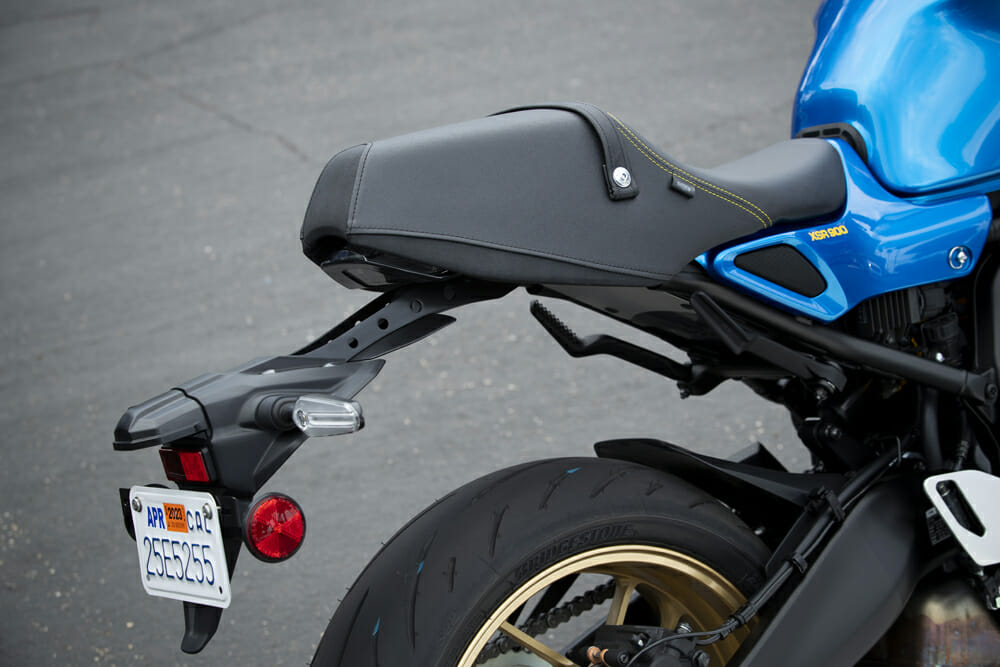 The passenger footpegs fold away for a beautifully clean back-end.
The passenger footpegs fold away for a beautifully clean back-end.
But it’s when you slip the clutch that all Yamaha’s hard work on dialing in the XSR900 becomes truly apparent. Up California Highway 33, the XSR is a showoff. Big fast sweepers are the rule, punctuated by the occasional decreasing radius clencher and, further north, a few near hairpins. It soaks them all up, firm suspension keeping the tires glued to the tarmac. Corner exits are all noise and blur, the brilliant engine opening up with a spectacular intake racket and reminding you why you love motorcycles in the first place.
The machine has a longer wheelbase and a wider turning circle than the MT-09. It comes with a longer swingarm—the same treatment tamed the Tracer. But on the lithe and athletic XSR, the stabilizing effect combines with that riding position and the excellent Bridgestone Battleax S22 tires for terrific, fast and accurate transitions. Instead of being stiff and uncomfortable, the new ergonomics and stiff seat padding encourages active riding and dangling your meat off the seat.
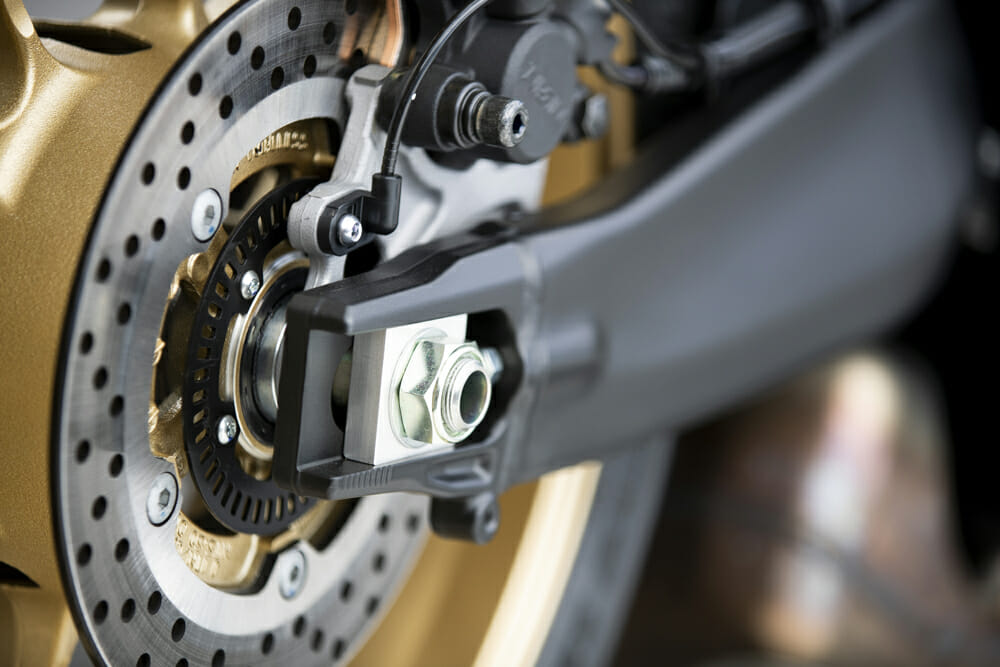 The swingarm, like many parts, has been lifted from the Tracer 9 GT.
The swingarm, like many parts, has been lifted from the Tracer 9 GT.
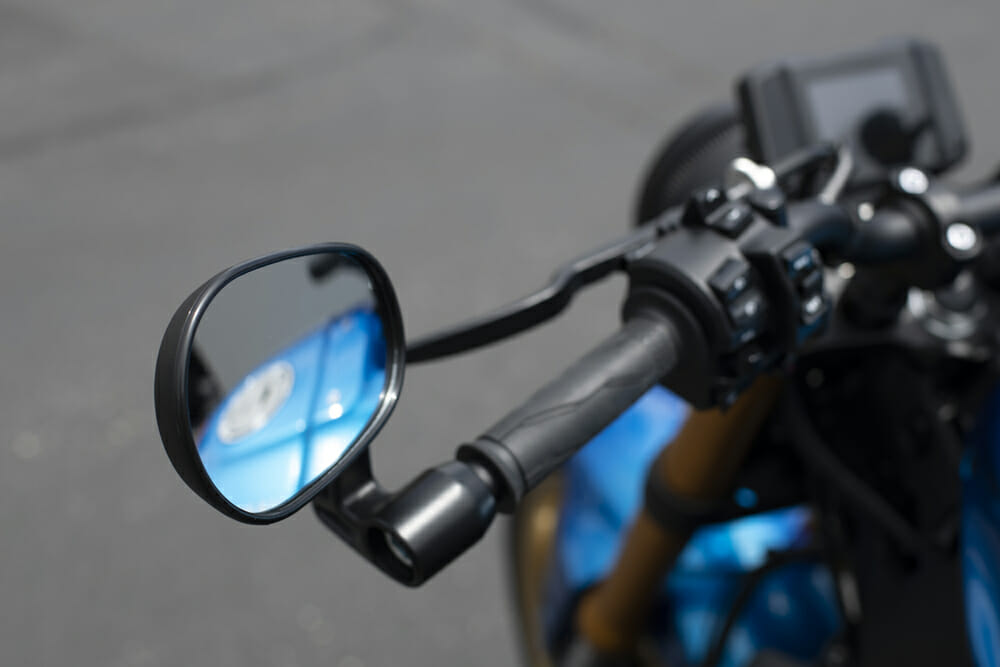 Bar-end mirrors look great but can be a touch awkward.
Bar-end mirrors look great but can be a touch awkward.
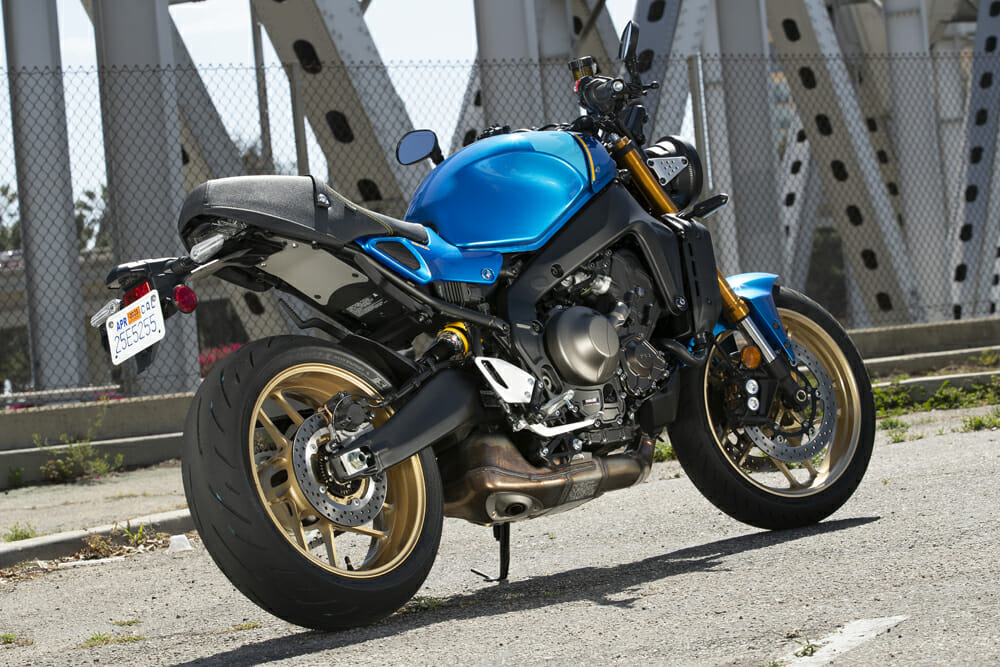 Aside from the massive exhaust collector box, this a beautifully finished motorcycle.
Aside from the massive exhaust collector box, this a beautifully finished motorcycle.
A reminder: This is an inexpensive machine. Other manufacturers make bikes that look fantastic and stir every one of your lizard-brain impulses. Nobody except Yamaha is doing it for under $10,000.
But that’s not to say it’s perfect. The CP3 trio was built on a budget. From a packaging perspective, they’re remarkable for it. The thin-wall frame is exceptional for its ability to save cost in manufacturing as well as weight, for instance. And unsurprisingly there are a fair number of parts shared around the family. The dash is the same as the MT-09, and it has thrift written all over it. The clutch lever, which works wonderfully, also dangles weirdly in the wind, and the bar-end mirrors leave awkwardly filled mounts in their original homes. That long swingarm? All signs point to it being yanked straight off the Tracer. And you notice the thing when you’re going slow. A smidge of extra lock would go a long way toward making the XSR900 a little more nimble when haunting parking lots rather than foothills.
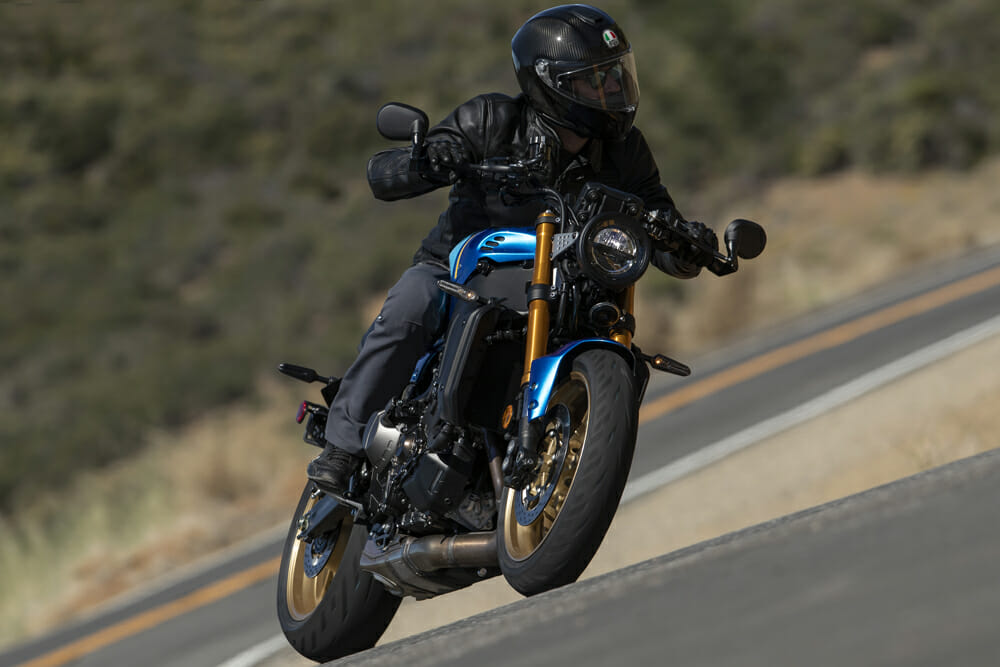 The XSR’s motor is a gem of a thing and will happily play in the canyons as well as perform city duties without complaint.
The XSR’s motor is a gem of a thing and will happily play in the canyons as well as perform city duties without complaint.
It’s just little stuff. If this is the extent of the compromise we must tolerate, consider us sold on Yamaha’s choices when rummaging around the parts bin.
Mostly because the great details in the design far surpass a little savings here and there. Take the passenger pegs, for instance. Back seat accommodations have counted on the peg itself to tuck away for generations. That typically means an ungainly dangling mounting point. On the XSR900, the passenger peg is one long, elegant arm that folds up and out of the way on each side of the bike. When needed, the entire assembly rotates into place, landing with a satisfying mechanical snick. Somewhere, right this instant, a motorcycle designer is looking at them and smacking themselves in the forehead wondering why they didn’t think of Yamaha’s solution first.
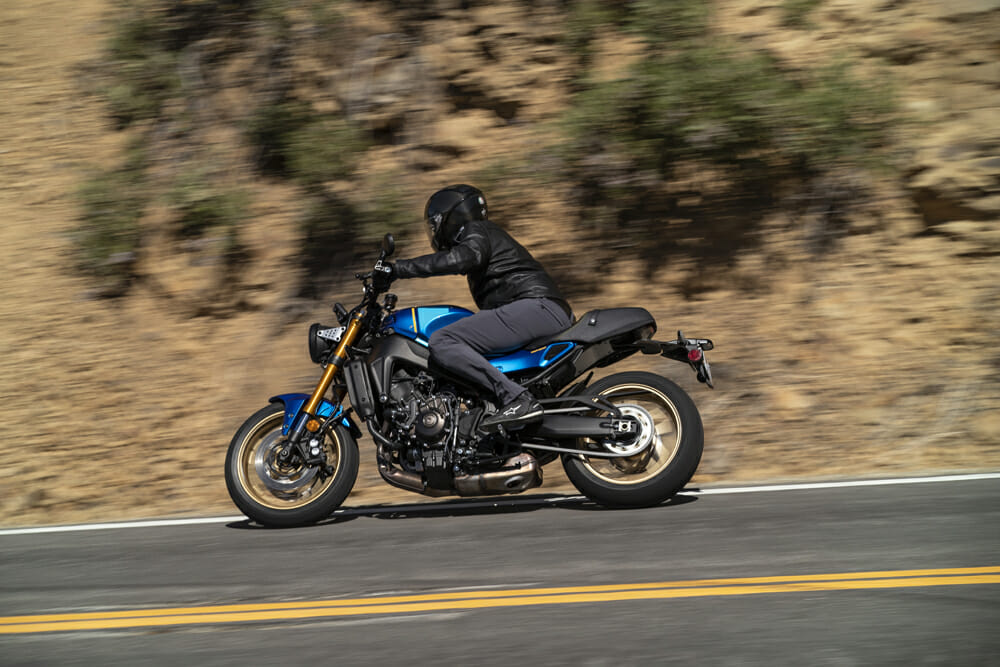 Racy stance is matched to excellent comfort from the firm seat padding.
Racy stance is matched to excellent comfort from the firm seat padding.
The result is the machine it always should have been. The XSR900 was a classic. Almost. It was almost a perfect combination of style and sportiness. Almost the better, more refined alternative to its wildly exciting yahoo of a platform-mate, the MT-09. Almost one of the easiest bikes to recommend to any enthusiastic road rider.
But the XSR always lived in the shadow of its showy, wheelie-happy family, while suffering from the same niggling irritations: the famously frustrating throttle control on early machines, the weirdly apparent cost cutting on later bikes. And because of that, it was the odd one out, the black sheep. Until now. CN
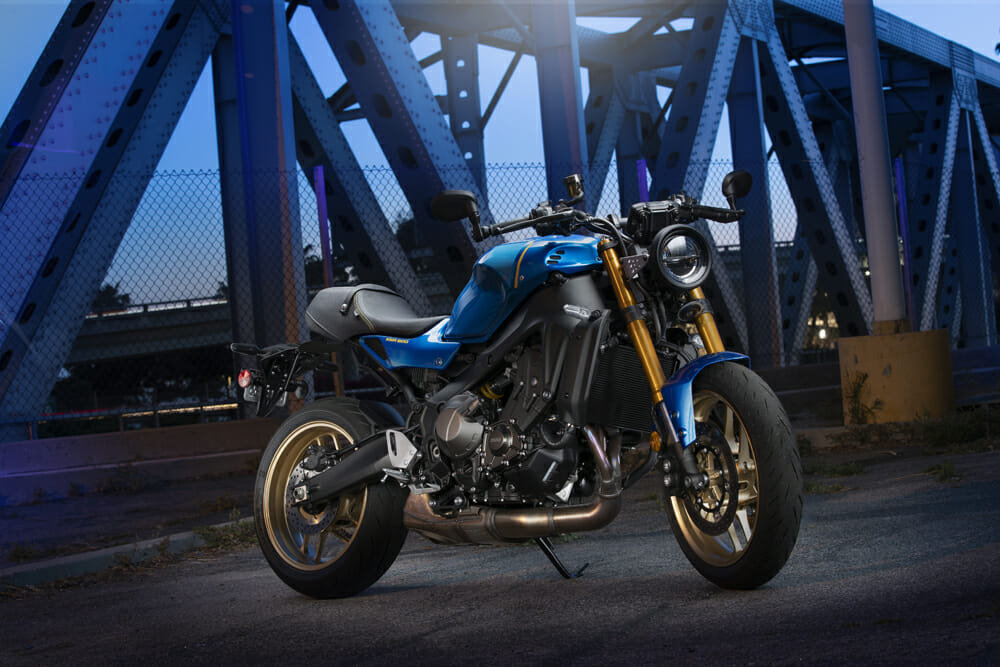
2022 Yamaha XSR900 Specifications
| MSRP: |
$9399 |
| Engine: |
Inline three-cylinder |
| Valvetrain: |
DOHC, 4 valves per cylinder |
| Cooling System: |
Liquid |
| Displacement: |
890cc |
| Bore x Stroke: |
78 x 62.1mm |
| Compression Ratio: |
11.5:1 |
| Fuel System: |
Multipoint sequential electronic fuel injection |
| Exhaust: |
3-1 |
| Clutch: |
Wet, multi-plate |
| Transmission: |
6-speed |
| Frame: |
Die-cast aluminum |
| Front Suspension: |
41mm fork, USD, fully adjustable |
| Rear Suspension: |
Single shock, spring preload, rebound damping adj. |
| Front-Wheel Travel: |
5.1 in. |
| Rear-Wheel Travel: |
5.4 in. |
| Front Wheel: |
17 x 3.5 in. |
| Rear Wheel: |
17 x 5.5 in. |
| Front Tire: |
120/70 ZR17 in. |
| Rear Tire: |
180/55 ZR17 in. |
| Front Brake: |
Twin 298mm floating discs, 4-piston radial-mount calipers, cornering ABS |
| Rear Brake: |
Single 245mm disc, 2-piston sliding caliper, cornering ABS |
| Rake: |
25° |
| Trail: |
4.3 in. |
| Seat Height: |
31.9 in. |
| Wheelbase: |
58.9 in. |
| Weight (wet, claimed): |
425 lbs. |
| Fuel Capacity: |
3.7 gal. |
| Colors: |
Legend Blue, Raven |
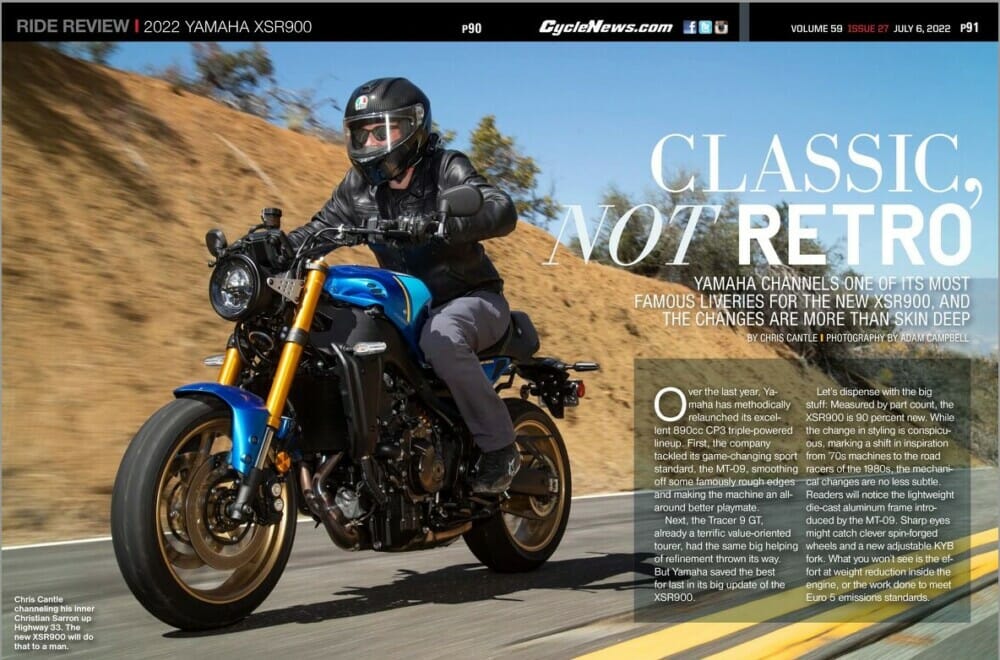
Click here to read the 2022 Yamaha XSR900 Review in the Cycle News Digital Edition Magazine